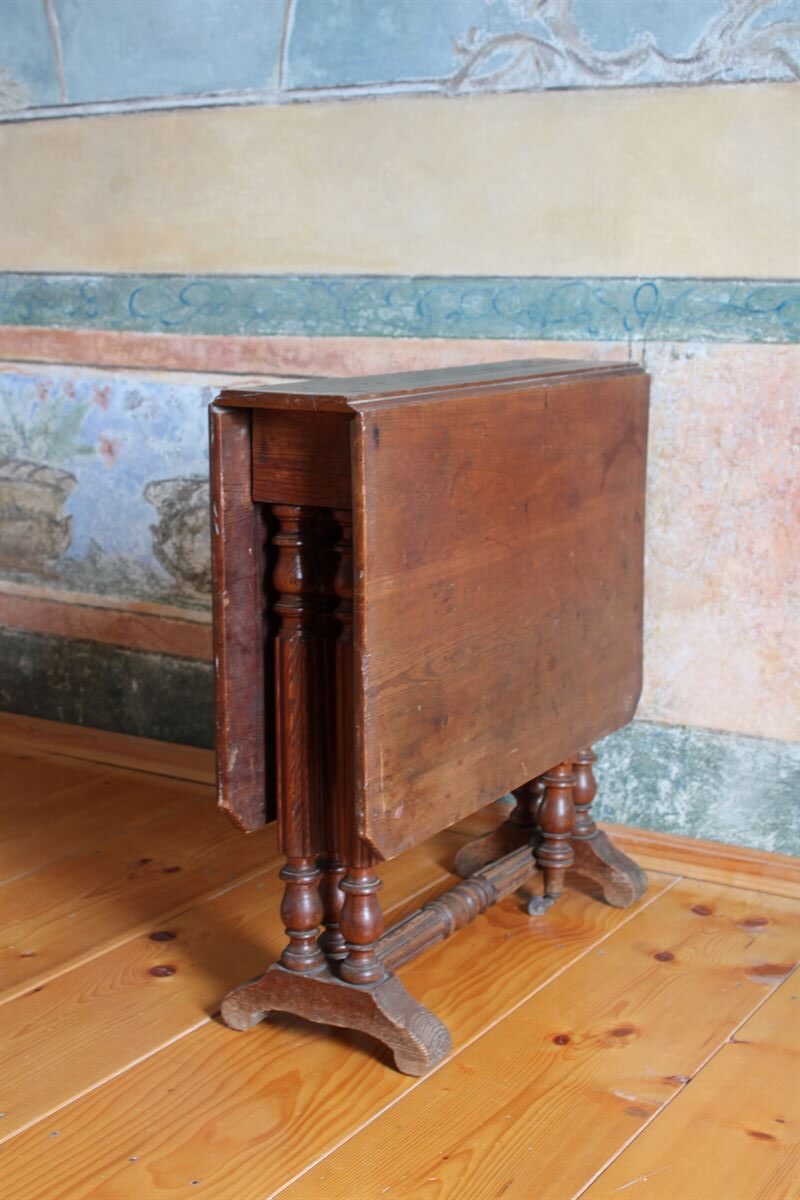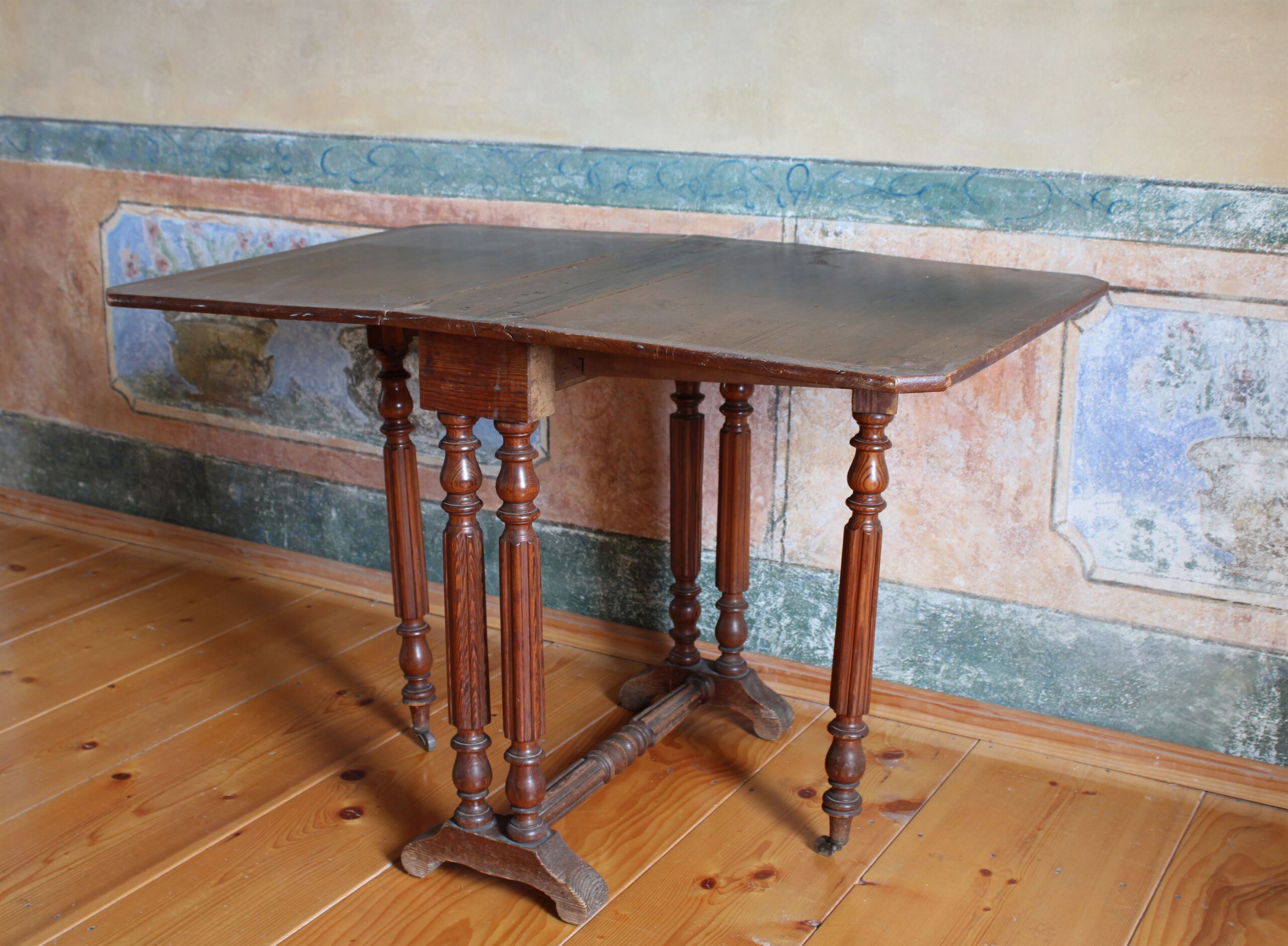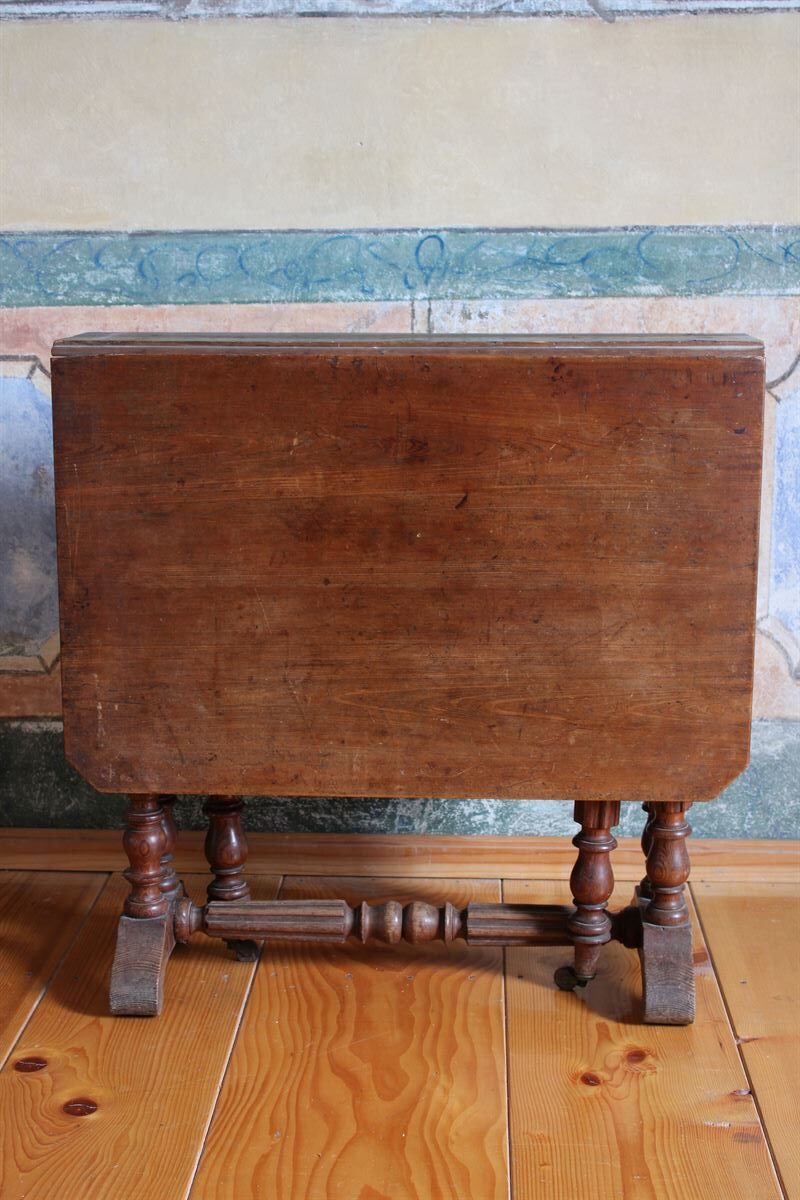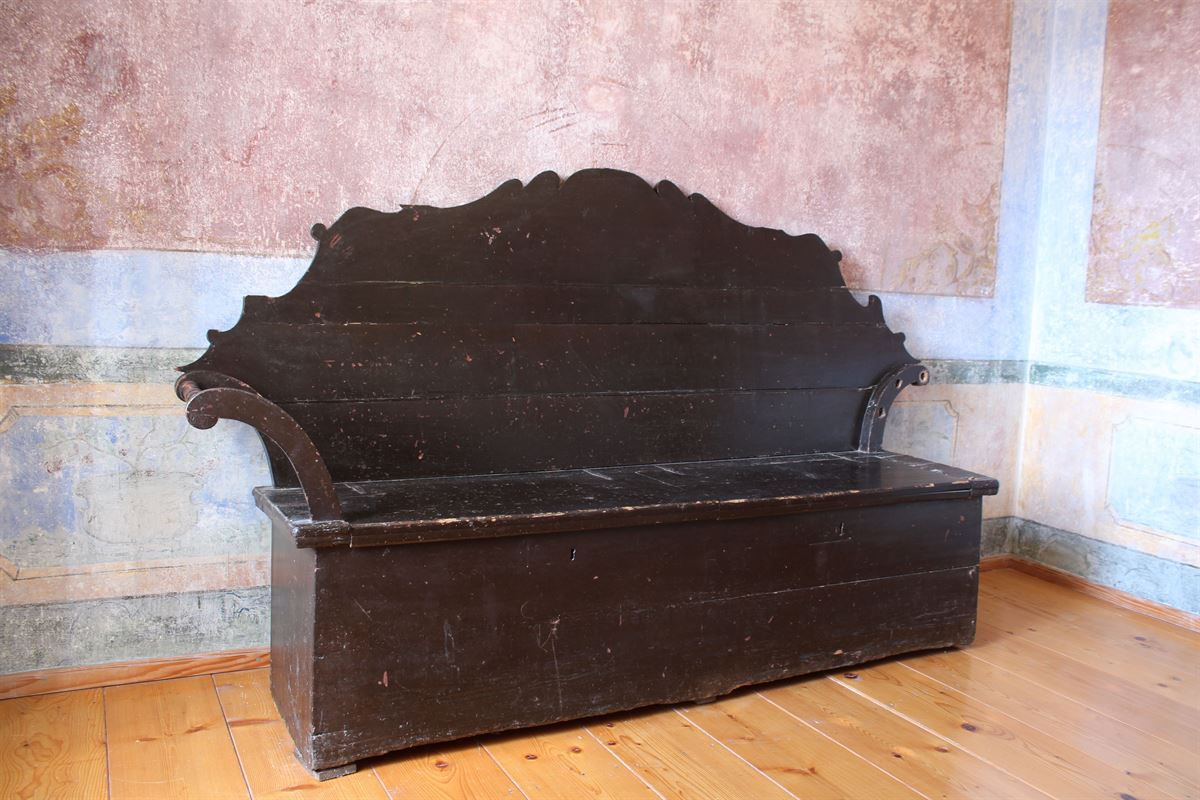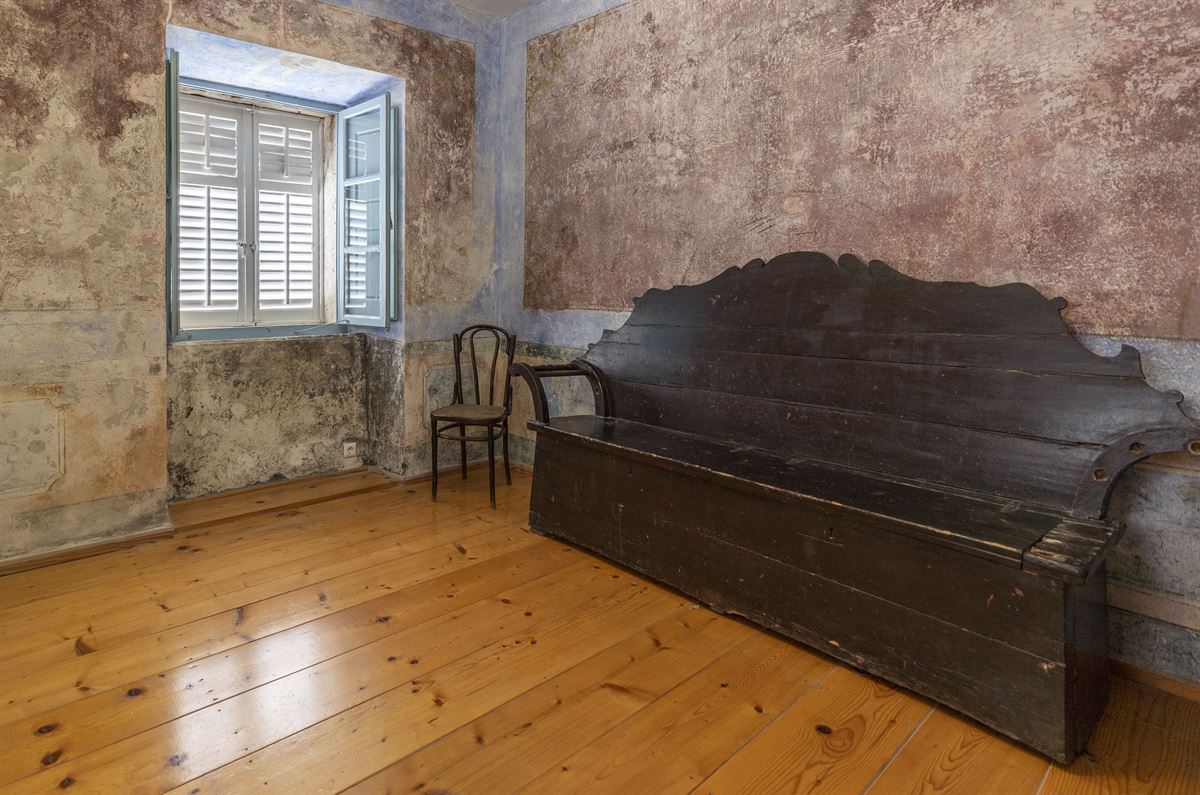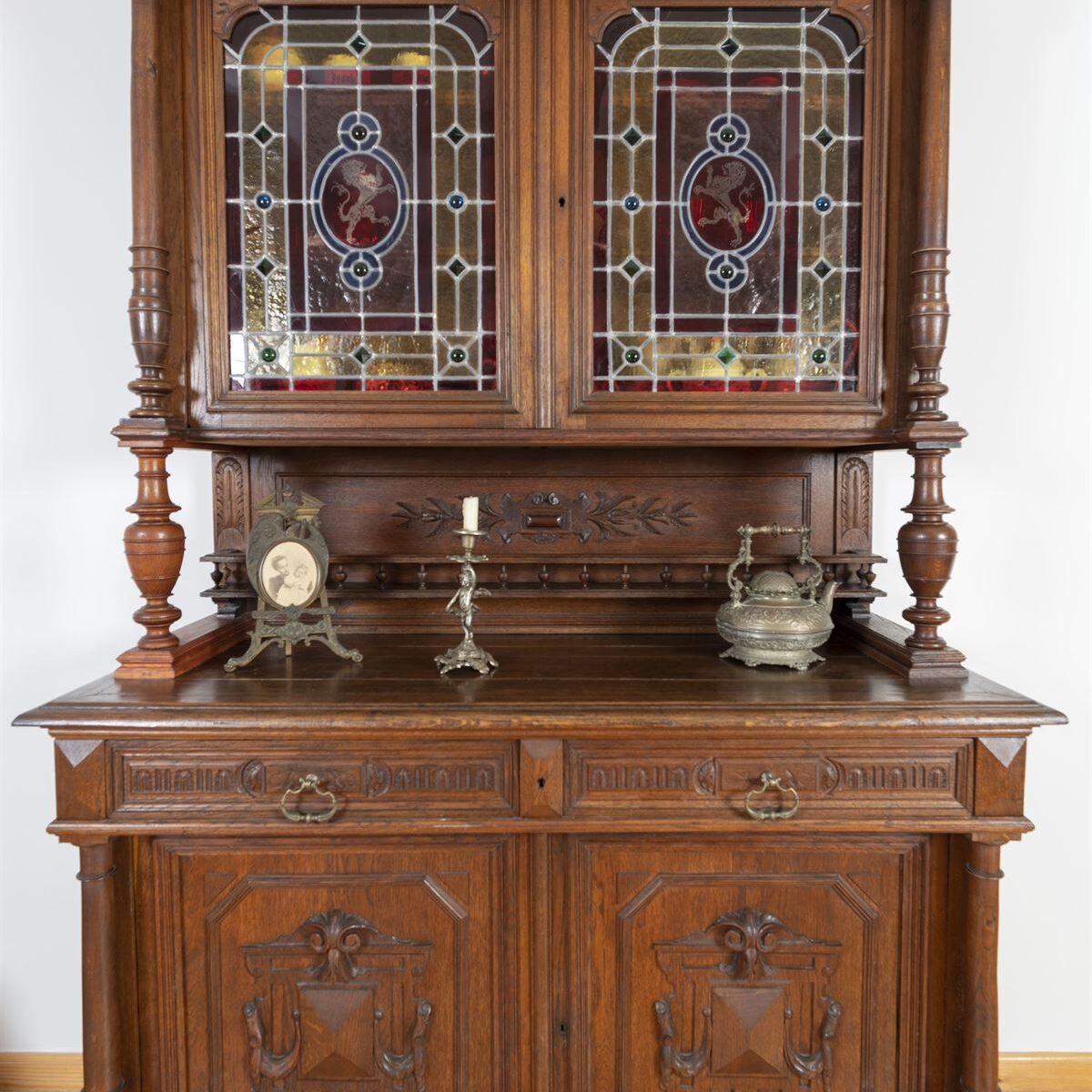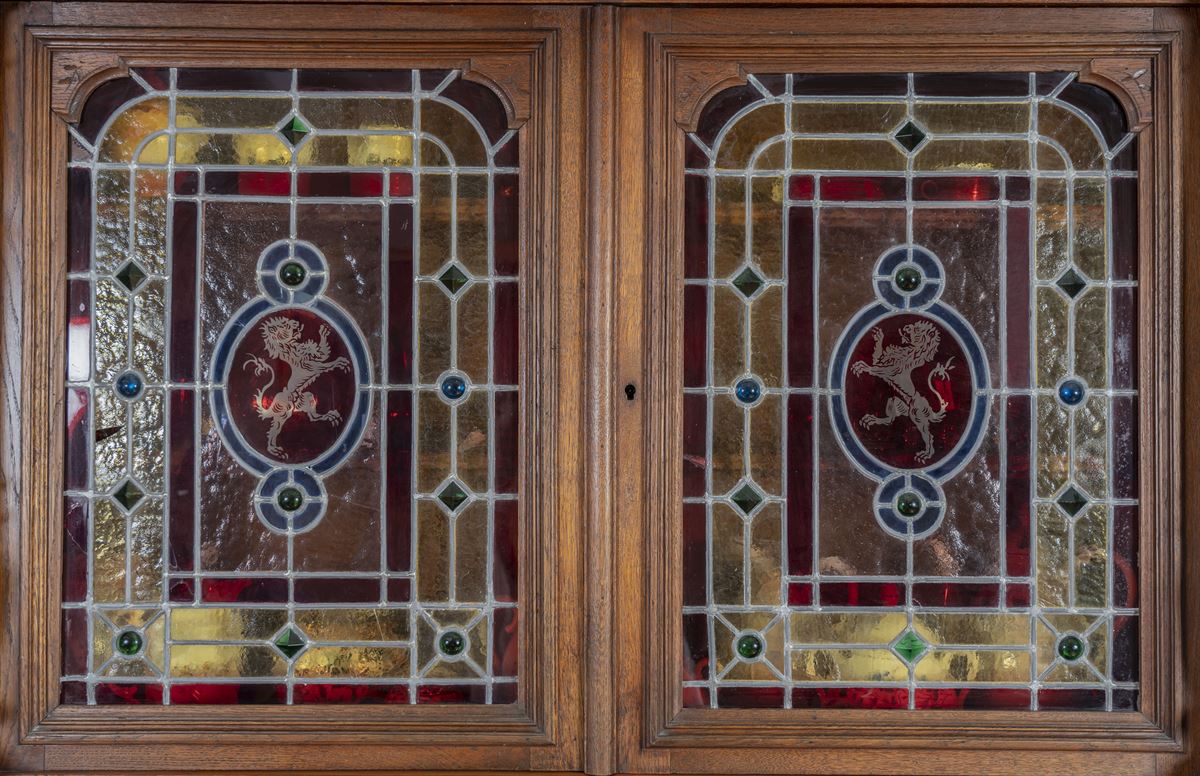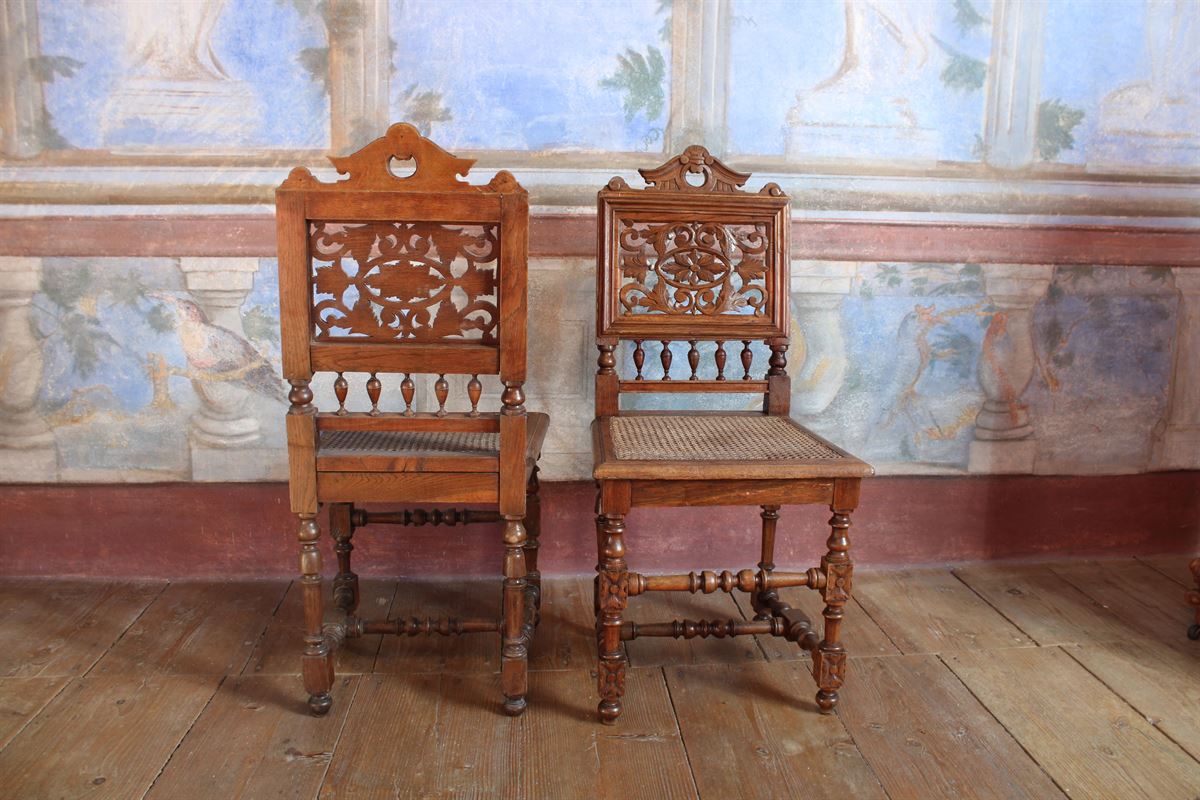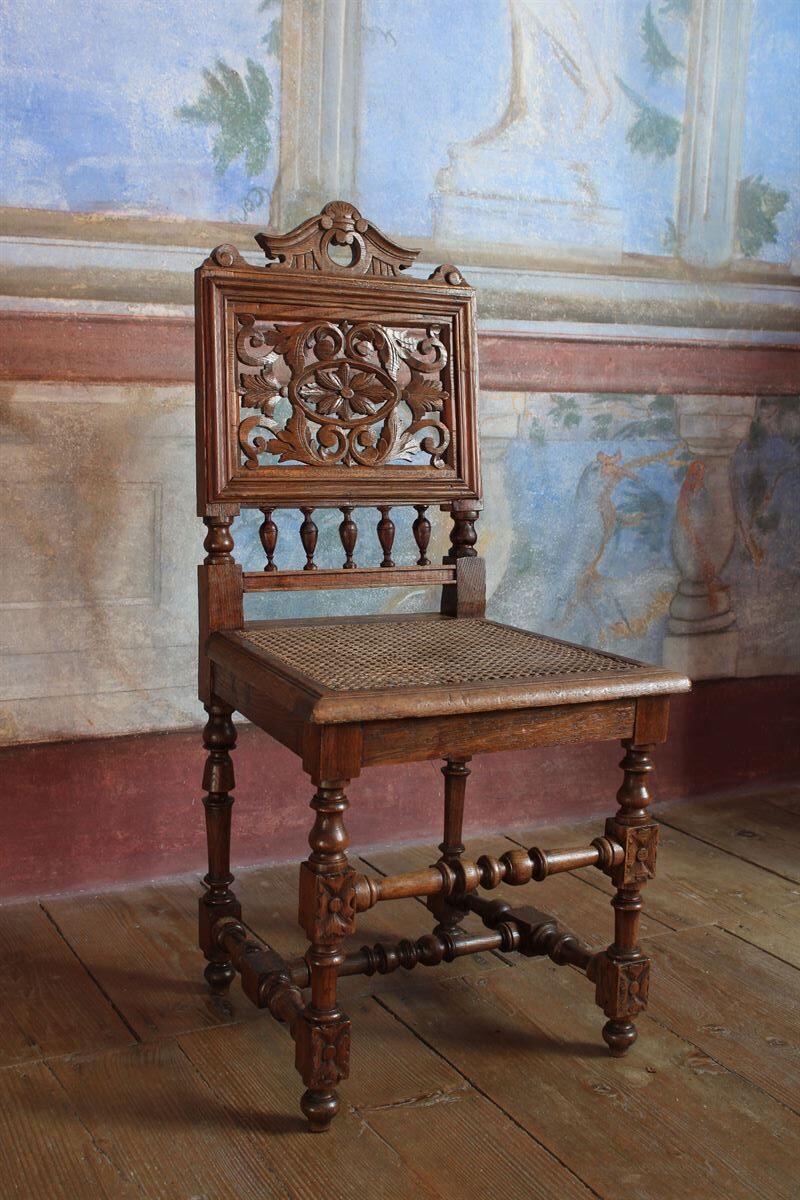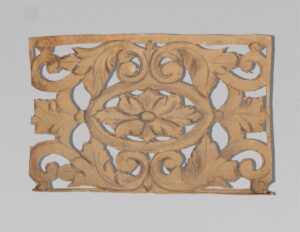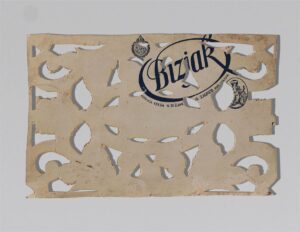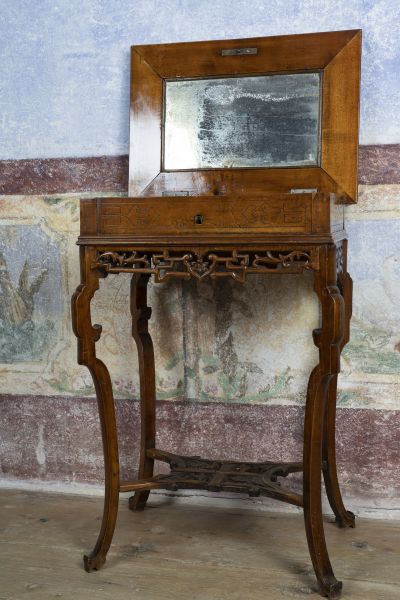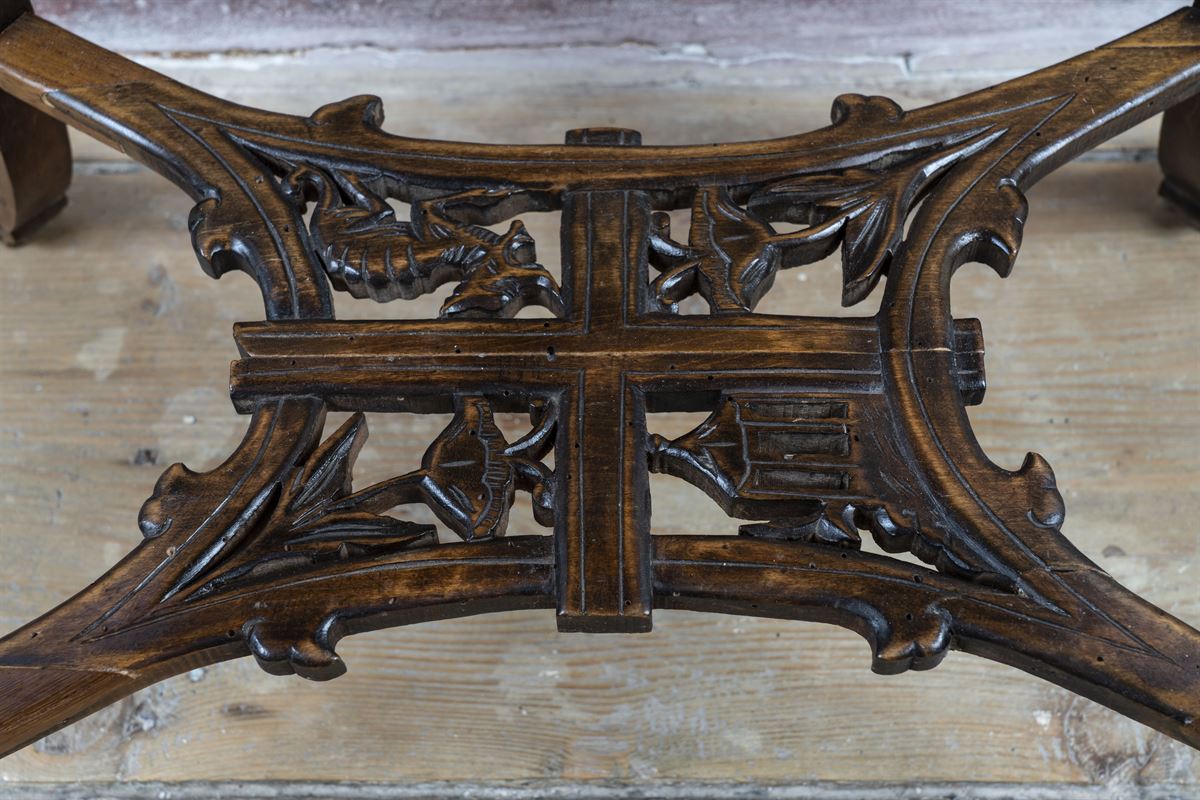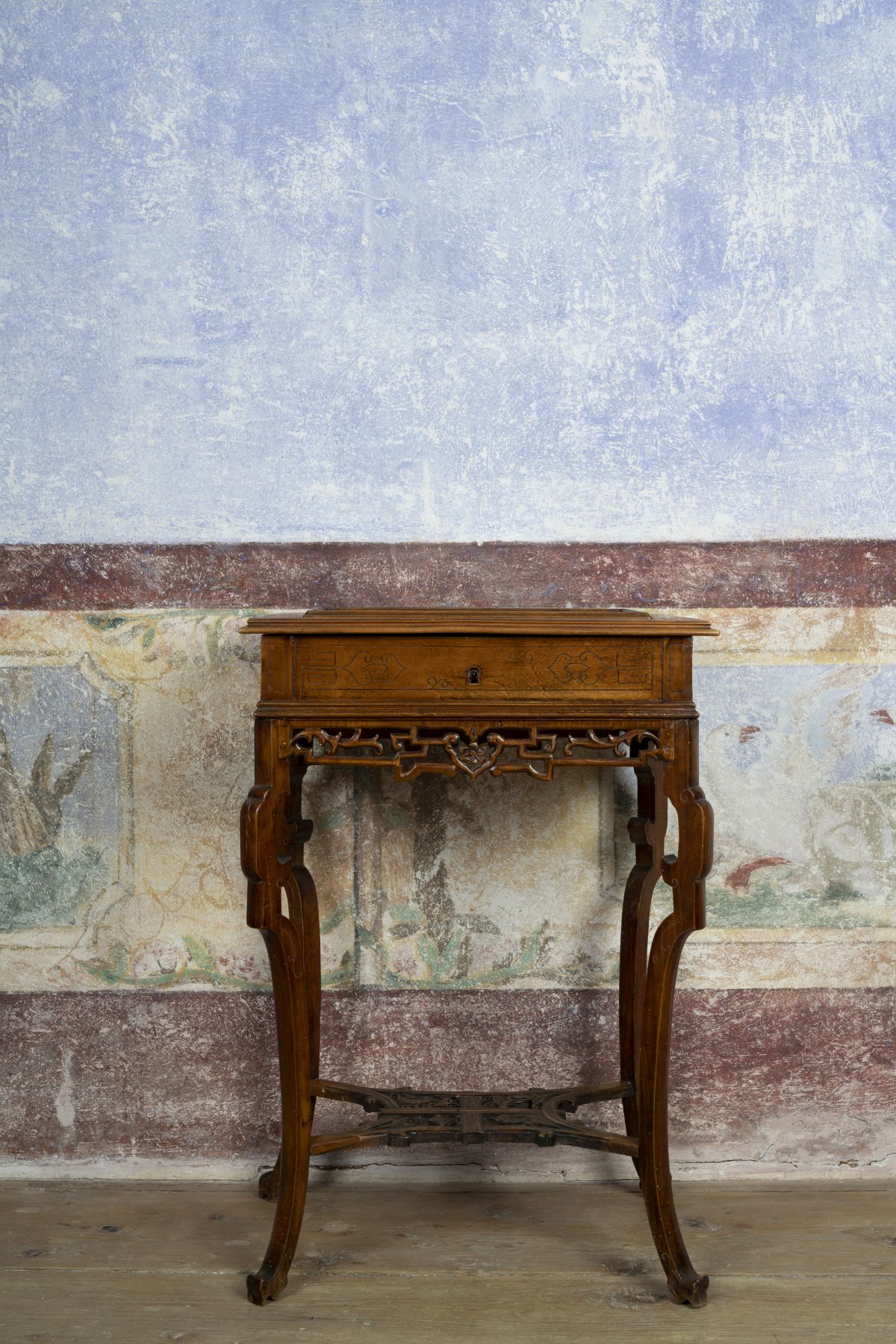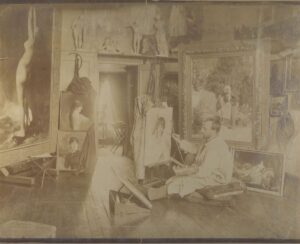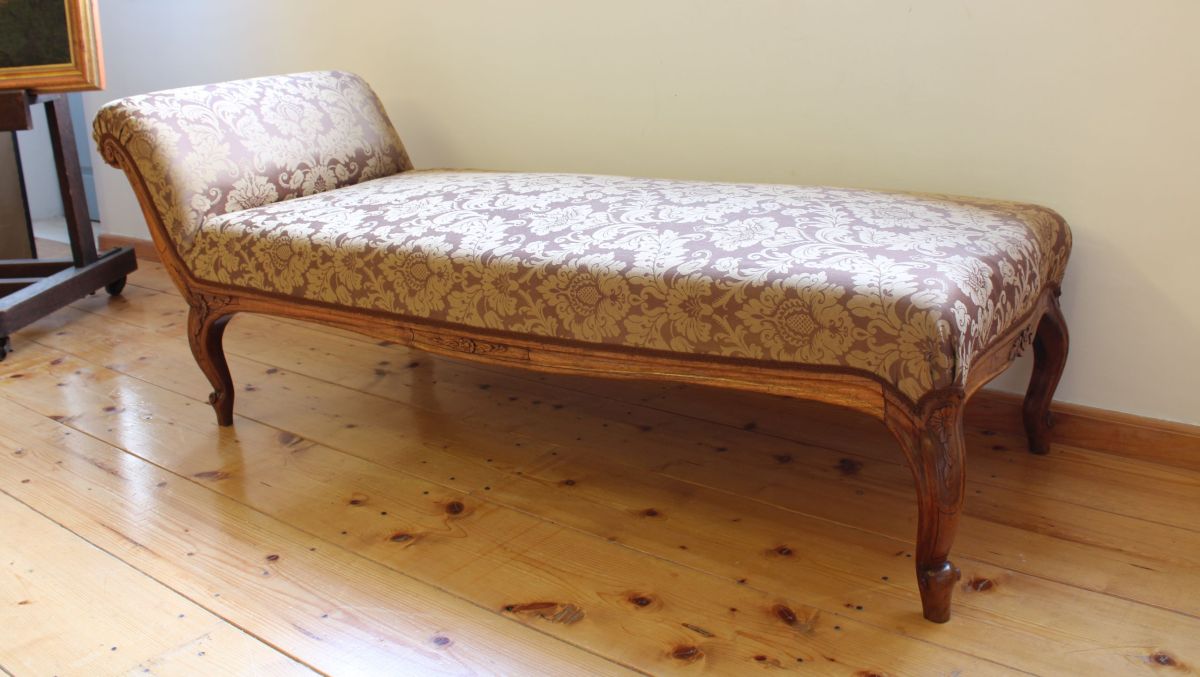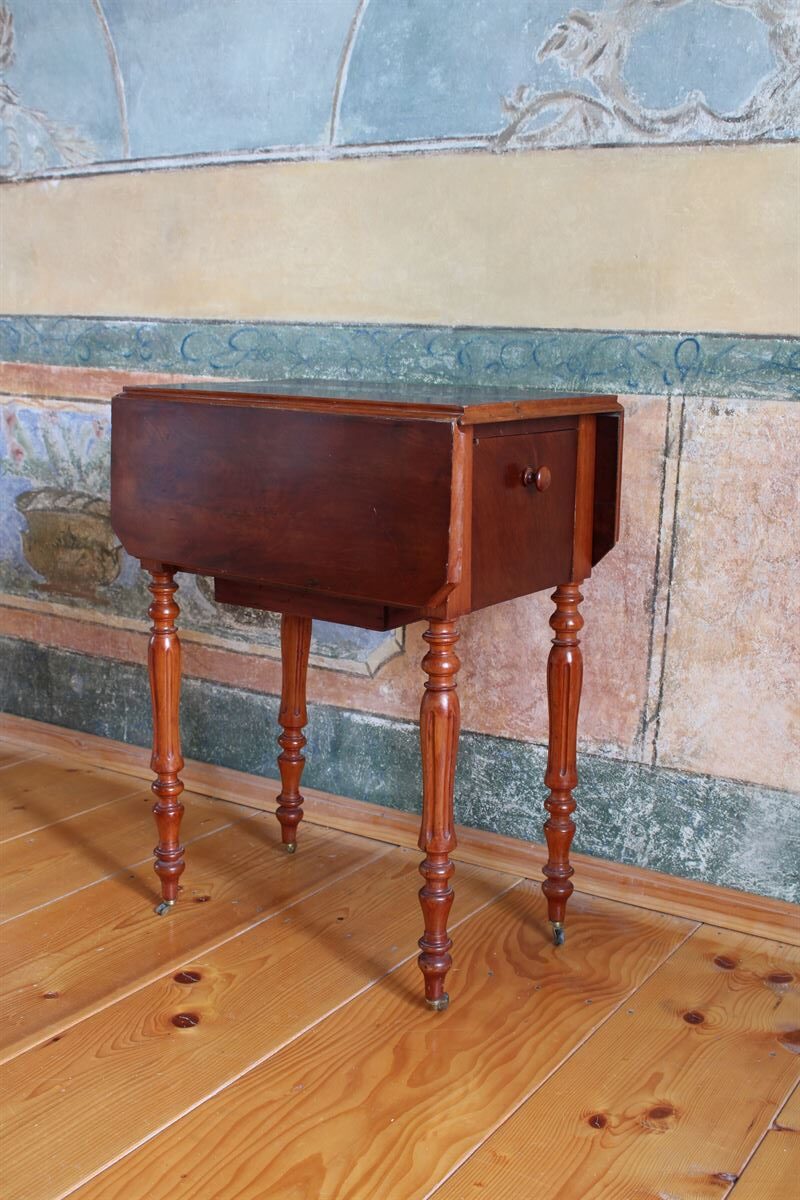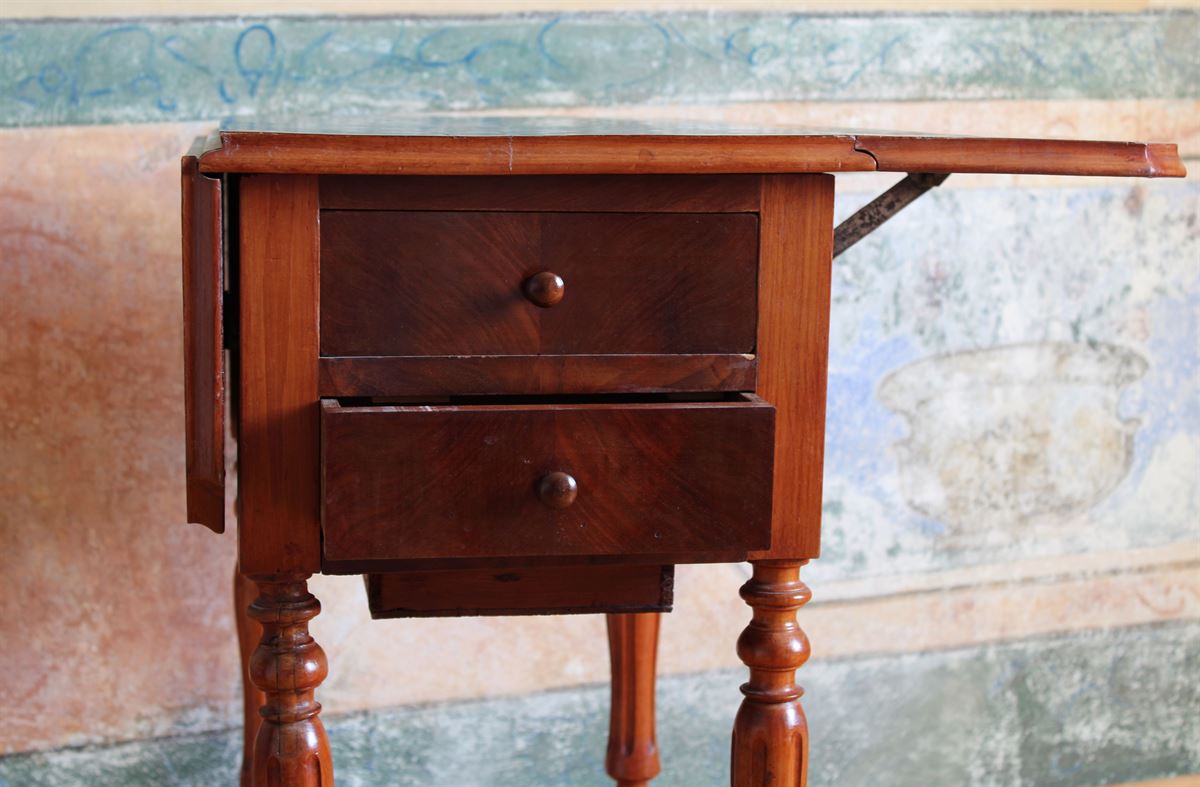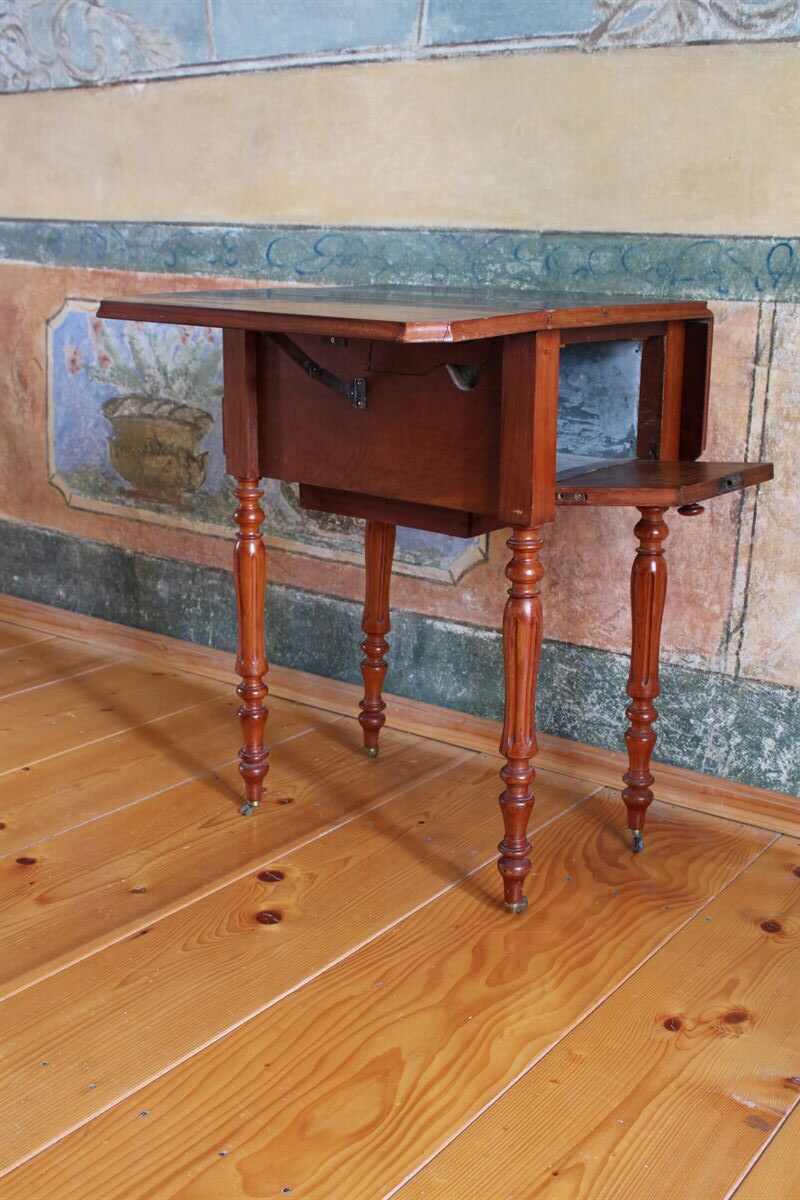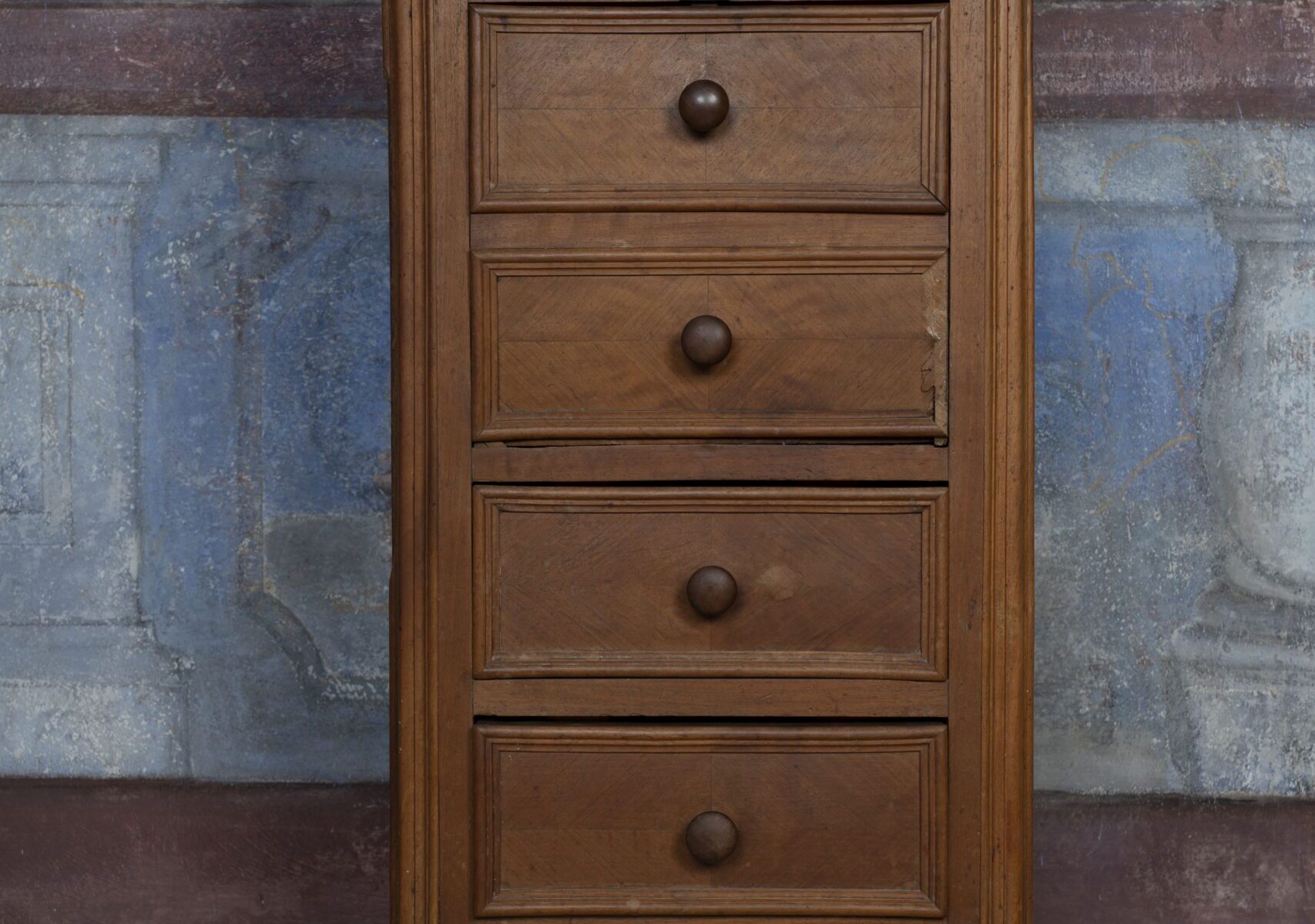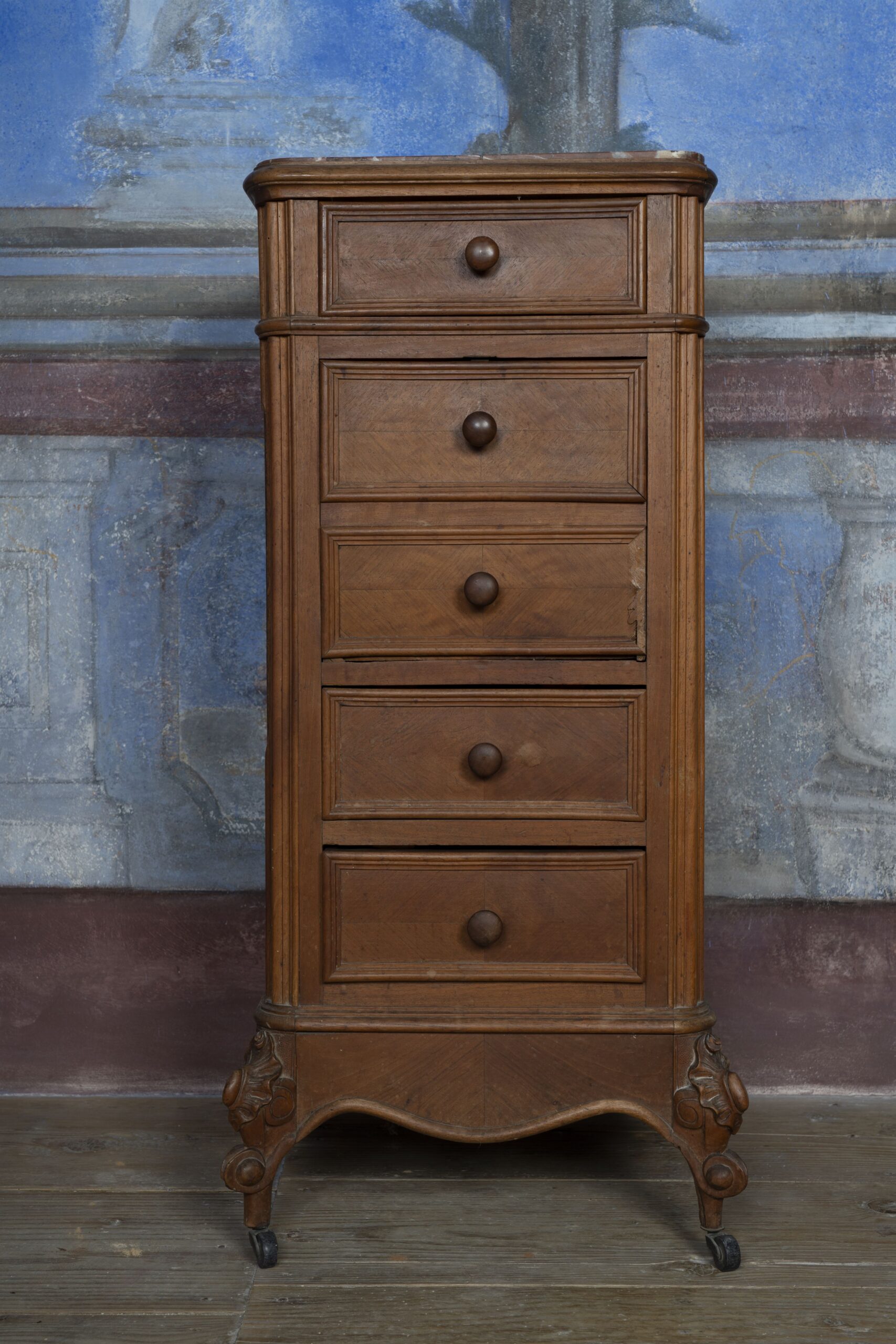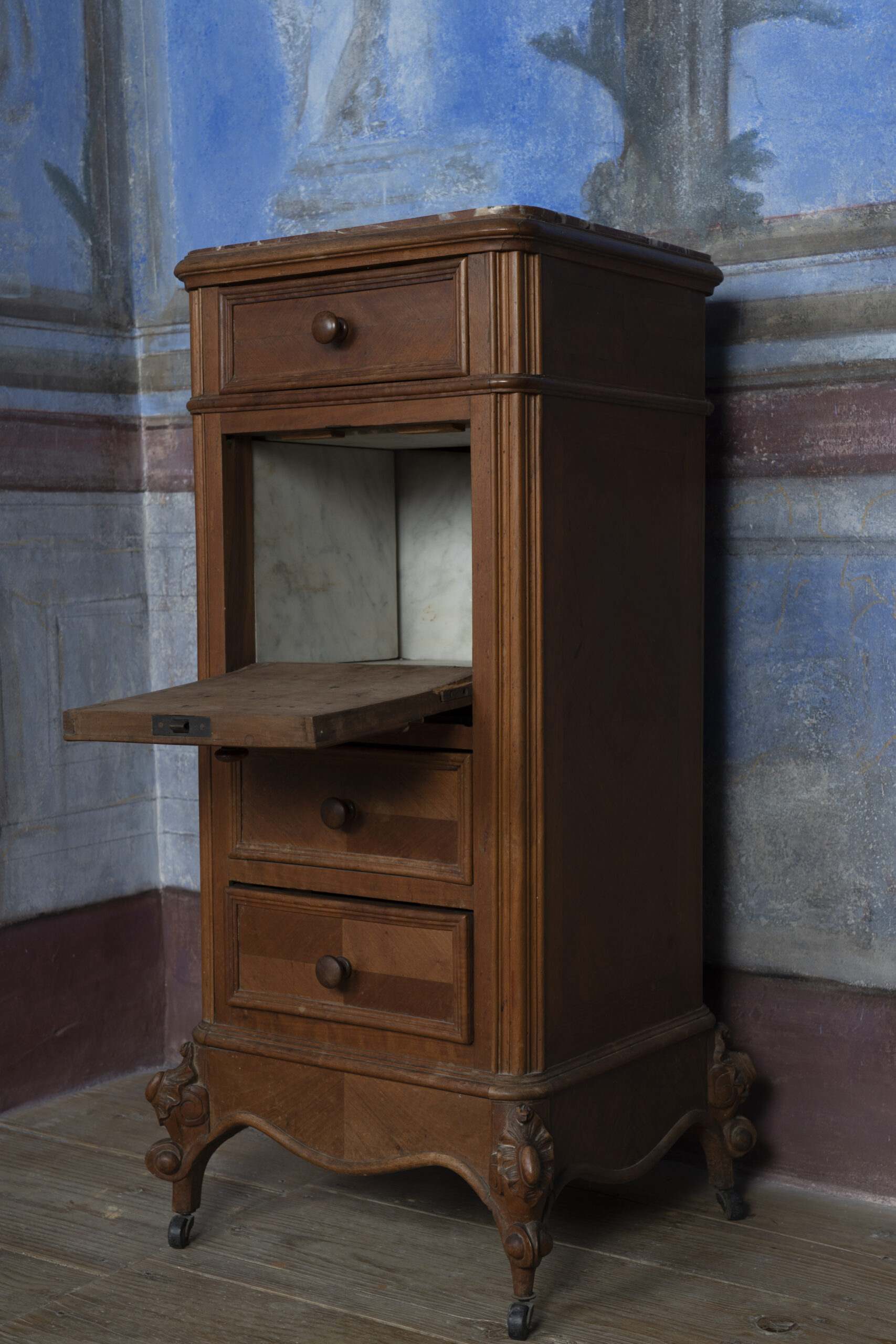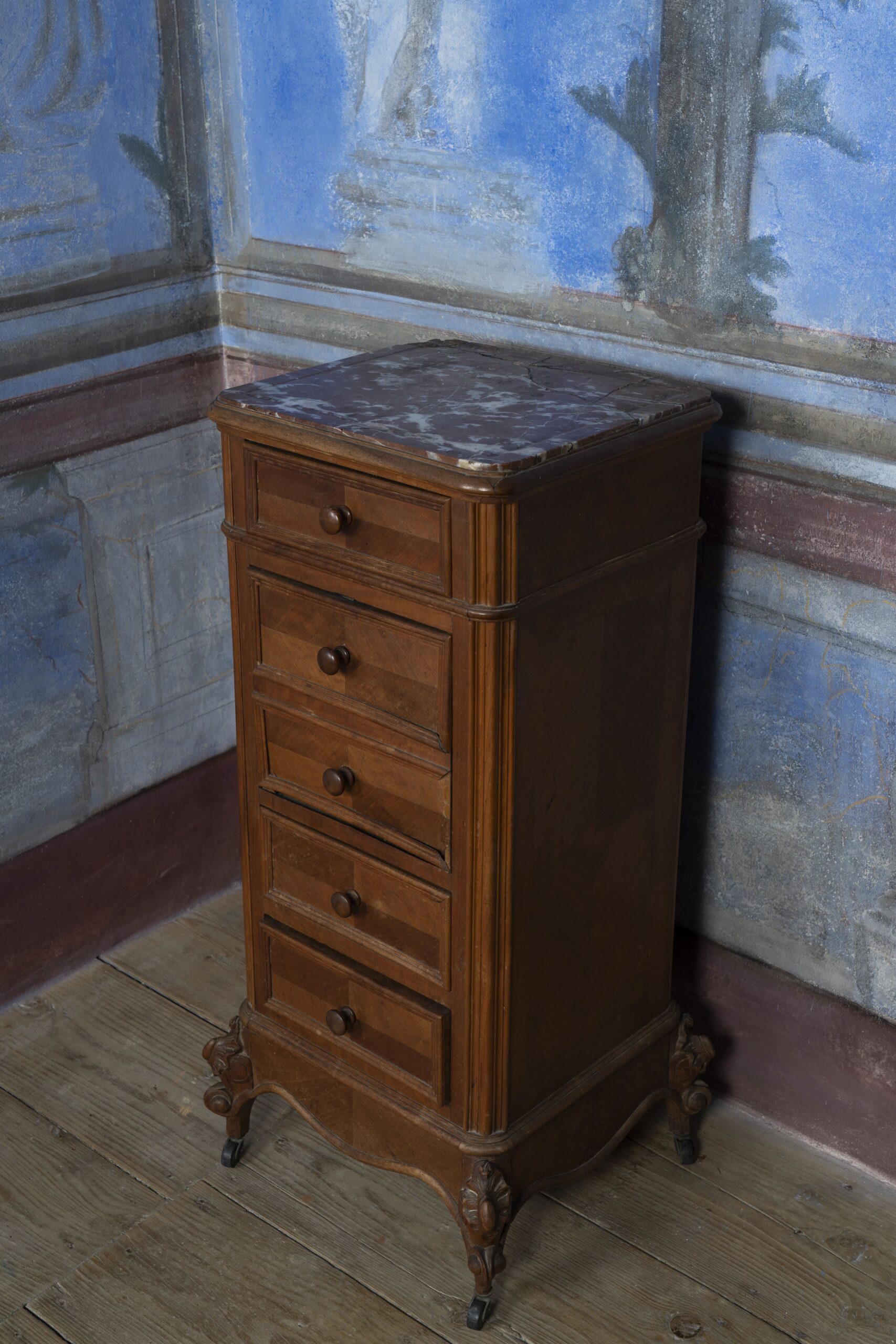tablica
| Inventory number: KB-139 |
| Material: wood (walnut) |
| Dimensions: 70 x 70 x 104.5 cm |
| Dating: circa 1880 |
| Origin: France |
This type of table is called a gate-lag table due to the similarity of the table legs to gates. The table consists of a fixed top and two movable leaves that are lifted to form the table surface. The folding leaf is supported by hinged legs connected at the top and bottom by crossbars that resemble gates. In England, this type of furniture has been known since the 16th century. When folded, the table is very narrow. It stands on paired lathe-turned legs merging into a single leg that is interconnected by a lathe-turned rod. It also features two additional lathe-turned legs with wheels that extend to support the unfolded table surfaces.
.


